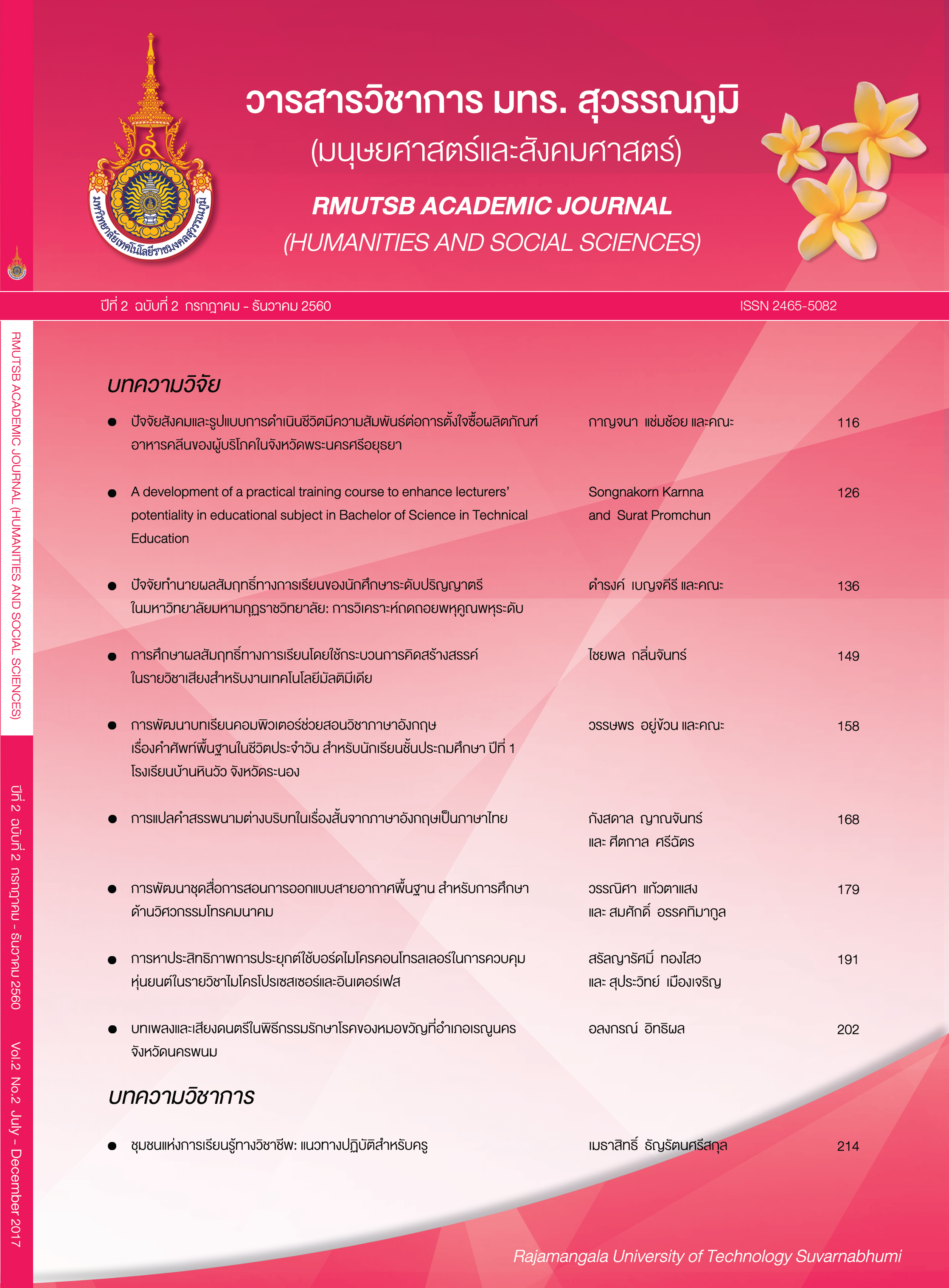บทเพลงและเสียงดนตรีในพิธีกรรมรักษาโรคของหมอขวัญที่อำเภอเรณูนคร จังหวัดนครพนม
Main Article Content
Abstract
วัตถุประสงค์ของงานวิจัยนี้ เป็นการศึกษาบทเพลงและเสียงดนตรีในพิธีกรรมรักษาโรคของหมอขวัญชาวผู้ไทยในอำเภอเรณูนคร จังหวัดนครพนม จากการศึกษาพบว่า หมอขวัญใช้คำพูดชนิดปลอบประโลมใจผู้เจ็บป่วยมากที่สุด และมีคำพูดลักษณะอื่นๆ ประกอบในขณะเรียกขวัญ ได้แก่ การบอกกล่าว การชี้นำ การผูกมัด การแสดงอารมณ์ความรู้สึกและการประกาศแถลงการณ์ คำพูดแบบอ้อมค้อมในการวิงวอนร้องขอ มีการใช้ประโยคที่เป็นคำถาม แต่มีเจตนาเพื่อบอกเล่าหรือขอร้องให้ขวัญของผู้ป่วยกลับมาเข้าร่าง เพื่อให้หายเจ็บป่วย กลับมาเป็นสุขตามปกติ รวมทั้งใช้คำพูดเพื่อปลอบประโลมใจผู้เจ็บป่วย แต่ใช้รูปประโยคใหม่เป็นประโยคคำสั่งห้ามปรามแทน สำหรับการเก็บข้อมูลภาคสนามมาวิเคราะห์ใช้วิธีการบอกต่อ (snowball sampling technique method) จากหมอขวัญ 5 คน ซึ่งได้ผลสรุปที่สอดคล้องกับทฤษฎีภาษาศาสตร์ เรื่อง การใช้วัจนกรรม (คำพูด) ของจอห์น อาร์ เซอร์ล ที่กล่าวว่า “คำพูดก่อให้เกิดการกระทำ” เพราะคำพูดเรียกขวัญในพิธีกรรมรักษาโรคของหมอขวัญ สามารถใช้คำพูดเพื่อสร้างขวัญและกำลังใจให้ผู้ป่วยกลับมาเป็นปกติได้ งานวิจัยนี้แสดงให้เห็นถึงอัตลักษณ์ของชาวผู้ไทยในพิธีเหยาเลี้ยงผีที่พบว่า การเหยา (เรียกขวัญ) เป็นวัฒนธรรมของชาวผู้ไทยที่สะท้อนความเชื่อในการรักษาแบบพื้นบ้าน และผู้ป่วยที่หายจากการเจ็บป่วยจะฝากตัวเป็นลูกศิษย์และรับอำนาจศักดิ์สิทธิ์เป็นหมอเหยา (หมอขวัญ) คนต่อไป
The results showed that the soul calling speech acts of Phu-Thai shamans in therapeutic ceremonies procedure was the same. It was found that Moh Yao used the speech acts to reassure the patients most. The speech acts used were: the assertives, the directives, the commissives and the declaratives. In terms of indirect speech acts, questioning with purpose of asserting or soul recalling was used. In addition, reassuring in from of prohibiting utterances was used. The field trip analysis data used snowball sampling technique method form 5 shamans in Renu Nakhon district, Nakhon Phanom province. The results and conclusion of this research corresponds with the speech acts theory of John R. Searle as “speech makes acts”. It can be proved by the speech used by Moh Yoa to encourage and reassure the patients. This research indicates the Phu Thai Identity in Yoa Liang Phi Ritual. The results of the study reveal that the Yao ritual reflects the relation between Phu Thai religious belief and Phu Thai folk healing tradition. The patients who recover from their sickness may decide to inherit the sacred power from their healer and become Mor Yoa themselves.


